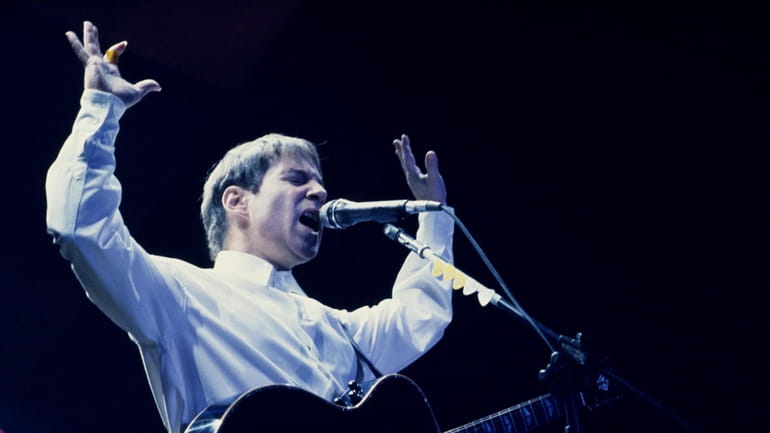'In Restless Dreams' review: Paul Simon documentary hits all the right notes

Paul Simon during his 1987 Graceland Tour in Milan. Credit: MGM+/Guido Harari
DOCUMENTARY "In Restless Dreams: The Music of Paul Simon"
WHERE Streaming on MGM+
WHAT IT'S ABOUT Paul Simon tells his story in "In Restless Dreams: The Music of Paul Simon," a two-part documentary (part one premiered last week; part two starts streaming Sunday) by the prolific filmmaker Alex Gibney, a career-spanning journey of about three-and-a-half hours.
The movie touches on all the familiar parts of this iconic story. It spans from the early pre-fame days recording with childhood friend Art Garfunkel, through the catapulting to superstardom via Simon & Garfunkel, the tension-ridden breakup and subsequent reunion for the 1981 Central Park concert, the solo hits, the “Saturday Night Live” and acting appearances, the nadir of the “Hearts and Bones” era and the resurgence with “Graceland.”
Gibney (“Taxi to the Dark Side”) gives his project the shape it needs by framing the story through the filming of the recording sessions for Simon's latest album, “Seven Psalms,” as the musician pushes forward with a vision that's at once new and radical and deeply aligned with his boundary-shattering career, while facing personal ailments including the loss of hearing in one ear.
MY SAY The jazz icon Wynton Marsalis sets the tone for this project early in the first episode. “Without friction, you don't have motion,” he says, observing how that fundamental tension defines Simon's music.
Gibney takes that notion to heart and comes away with the portrait first and foremost of a musical expeditionary. But he doesn't just tell us about Simon's eagerness to experiment with different global sounds, fusing, say, South African rhythms with American pop cultural iconography on “Graceland.”
He shows it.
So, “In Restless Dreams,” more than anything else, becomes the story of a musical artist at work. Gibney has Simon take us under the hood, to reveal the process of finding the complex soundscapes in his most famous songs, from the “Cecilia” drumbeat to the reggae-infused “Mother and Child Reunion” and the symphonic musical prayers of “Seven Psalms.”
It treats even some of the most famous songs in the world — “The Sound of Silence” being just one of many examples — as new discoveries, through stories about their creation, and Simon's own reflections on what they represent to him all these years later. Gibney structures each segment around the feelings evoked by the music; there's a stillness to the quieter work and a rapidly paced, expansive style when Simon begins his journey through world music.
To create a new sense of appreciation and understanding for songs that have been so baked into the cultural firmament that it's hard to believe they were ever new: that's a difficult and impressive accomplishment.
And it yields a biographical documentary that transcends the expected limitations. It might rehash the old disputes with Garfunkel, offering a largely one-sided perspective, of course, while also advancing through some of the other expected terrain, but that's not where it finds its heart. Like a great song, that essence unfolds somewhere above the facts on the ground, in a spiritual place, the realm of personal and collective memory.
BOTTOM LINE This is exactly how you make a documentary about a world-famous musician: by focusing on the work, not the behind-the-scenes drama.
